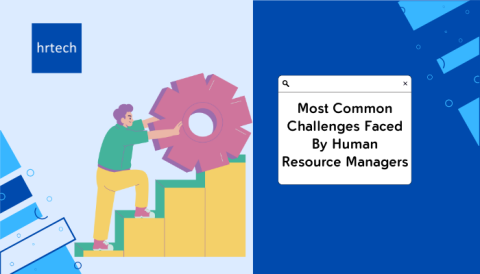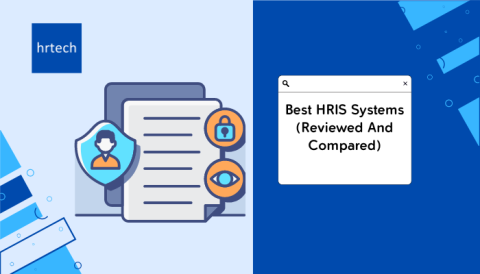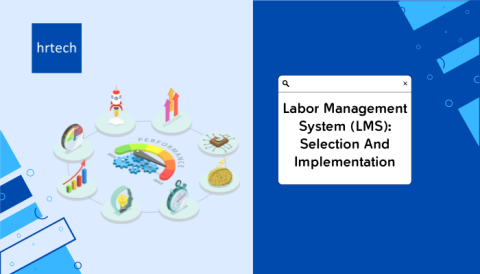Introduction
Managing human resources effectively is crucial for business success, and HR management software plays a key role in streamlining operations. From recruitment and payroll to employee engagement and compliance, the right HR manager software can transform workforce management, saving businesses time and money.
This guide explores different types of HR software, key features, selection criteria, and future trends to help you choose the best solution for your business. Whether you’re a startup or an enterprise, finding the right HR software can optimize processes, improve employee satisfaction, and ensure compliance with labor laws.
With a comprehensive platform like hrtech, you can access all these transformative HR technologies in one place, streamlining your decision-making process.
Keep reading to discover how HR technology can revolutionize your business operations and why investing in the right software is essential for long-term success.
What is HR Resource Management?
HR Resource Management (HRRM) refers to the strategic approach to managing an organization’s most valuable asset: its people. It involves planning, organizing, and optimizing human resources to ensure that employees are effectively utilized to meet the organization’s goals.
The primary objective of HR Resource Management is to align the right people with the right roles, foster a positive work environment, and support employee development. By efficiently managing HR resources, organizations can enhance productivity, reduce turnover, and ensure that the workforce is engaged and motivated.
Key aspects of HR Resource Management include:
- Recruitment & Talent Acquisition: Attracting and hiring the right candidates for the right roles.
- Employee Training & Development: Offering opportunities for skill-building and career advancement to enhance workforce performance.
- Performance Management: Setting clear expectations and evaluating employee performance to drive productivity and development.
- Compensation & Benefits: Developing competitive salary structures and benefit packages to attract and retain top talent.
- Compliance & Legal Requirements: Ensuring adherence to labor laws, regulations, and industry standards.
- Employee Relations: Promoting a positive work environment by addressing concerns, resolving conflicts, and improving employee engagement.
- Workforce Planning: Strategically managing the organization’s staffing levels and skill requirements in line with business objectives.
HRRM is essential for aligning talent management with company goals, improving productivity, and fostering a supportive work culture.
Core Functions of HR Management Software
HR management software serves as a centralized hub for handling all human resource activities. It eliminates manual processes, reduces paperwork, and helps organizations stay compliant with regulations. The most essential functions include:
1. Unification of HR Functions
Modern HR software integrates all core HR functions, such as:
- Employee record management
- Payroll processing and benefits administration
- Time and attendance tracking
- Performance management
- Learning and development
- Compliance tracking
By unifying these functions, HR departments can operate more efficiently, minimize redundancies, and enhance the employee experience.
2. Performance Management and Secure Data Storage
HR software allows businesses to set performance benchmarks, track employee progress, and conduct 360-degree feedback reviews. Additionally, it offers secure cloud storage to safeguard confidential HR data from cyber threats, ensuring GDPR and SOC 2 compliance.
3. Automation and Data-Driven Insights
HR software leverages automation and AI to optimize key processes, such as:
- Automated resume screening for faster hiring
- Payroll calculations, tax deductions, and compliance management
- Smart scheduling to improve workforce efficiency
- Predictive analytics for employee turnover and engagement
These features enable HR professionals to make data-driven decisions, enhancing both productivity and employee satisfaction.
4. Strategic Workforce Planning and Financial Forecasting
HR software integrates with financial planning tools, allowing businesses to:
- Forecast labor costs and plan hiring strategies
- Improve workforce productivity with real-time analytics
- Optimize compensation and benefits packages
- Stay compliant with evolving labor laws
By aligning HR functions with broader business objectives, companies can improve efficiency and gain a competitive edge.
hrtech offers a wide array of integrated solutions, ensuring your HR department operates efficiently from recruitment through to compliance.
Ready to dive deeper? Let’s check out the different flavors of HR management software and what makes each one tick.
Key Types of HR Management Software
HR management software comes in various forms, each catering to different business needs. Below are the four main categories, along with their primary functions and ideal use cases.
1. HRIS (Human Resource Information System)
Purpose: A foundational system designed to store and manage employee data.
Key Features:
- Centralized employee records
- Payroll and benefits administration
- Time tracking and attendance management
Best For: Small to medium-sized businesses looking for a cost-effective way to manage core HR tasks.
2. HRMS (Human Resource Management System)
Purpose: A more advanced HR solution that expands on HRIS with additional capabilities.
Key Features:
- Recruitment and applicant tracking
- Performance management and goal setting
- Employee training and development
Best For: Companies that need comprehensive HR functionalities, including hiring and performance evaluation.
3. HCM (Human Capital Management)
Purpose: A strategic HR platform focused on workforce optimization and long-term talent management.
Key Features:
- AI-driven workforce analytics
- Compensation and succession planning
- Employee engagement insights
Best For: Large enterprises looking to align HR processes with business strategy.
4. Function-Specific HR Software
Purpose: Specialized HR tools that target individual HR functions.
Key Examples:
- Payroll Software (e.g., ADP, Paycom) – Automates salary processing and tax compliance.
- Recruiting Software (e.g., Greenhouse, Lever) – Enhances talent acquisition and applicant tracking.
- Employee Engagement Tools (e.g., Culture Amp, Officevibe) – Monitors and improves workplace morale.
Best For: Businesses that need targeted solutions to complement existing HR systems.
These tools can be integrated into broader HR systems to create a customized HR tech stack.
Advantages of Cloud-Based HRMS
Cloud-based HR software is increasingly popular due to its flexibility, security, and cost-efficiency. Here’s why businesses prefer cloud HRMS:
1. Lower IT Costs and Maintenance
Unlike traditional on-premise systems, cloud HRMS eliminates the need for in-house IT infrastructure, reducing maintenance costs.
2. Faster Deployment and Updates
With cloud solutions, businesses can quickly implement HR software and receive continuous updates without downtime.
3. Improved Employee Experience
A cloud-based HRMS offers:
- Employee self-service portals for payroll, leave, and benefits
- Mobile access for remote workforce management
4. Enhanced Compliance and Security
Cloud HR software providers offer advanced data encryption, compliance tracking, and secure authentication to protect sensitive information.
For businesses in UAE and Saudi Arabia, hrtech provides specialized solutions tailored to regional needs, whether you’re a small business or a large enterprise.
Top HR Management Software Solutions
Choosing the right HR manager software can transform workforce management, streamline payroll, enhance compliance, and improve overall employee experience. Below is an evaluation of some of the best HR software solutions available, tailored for businesses of different sizes and needs.
1. Hrtech
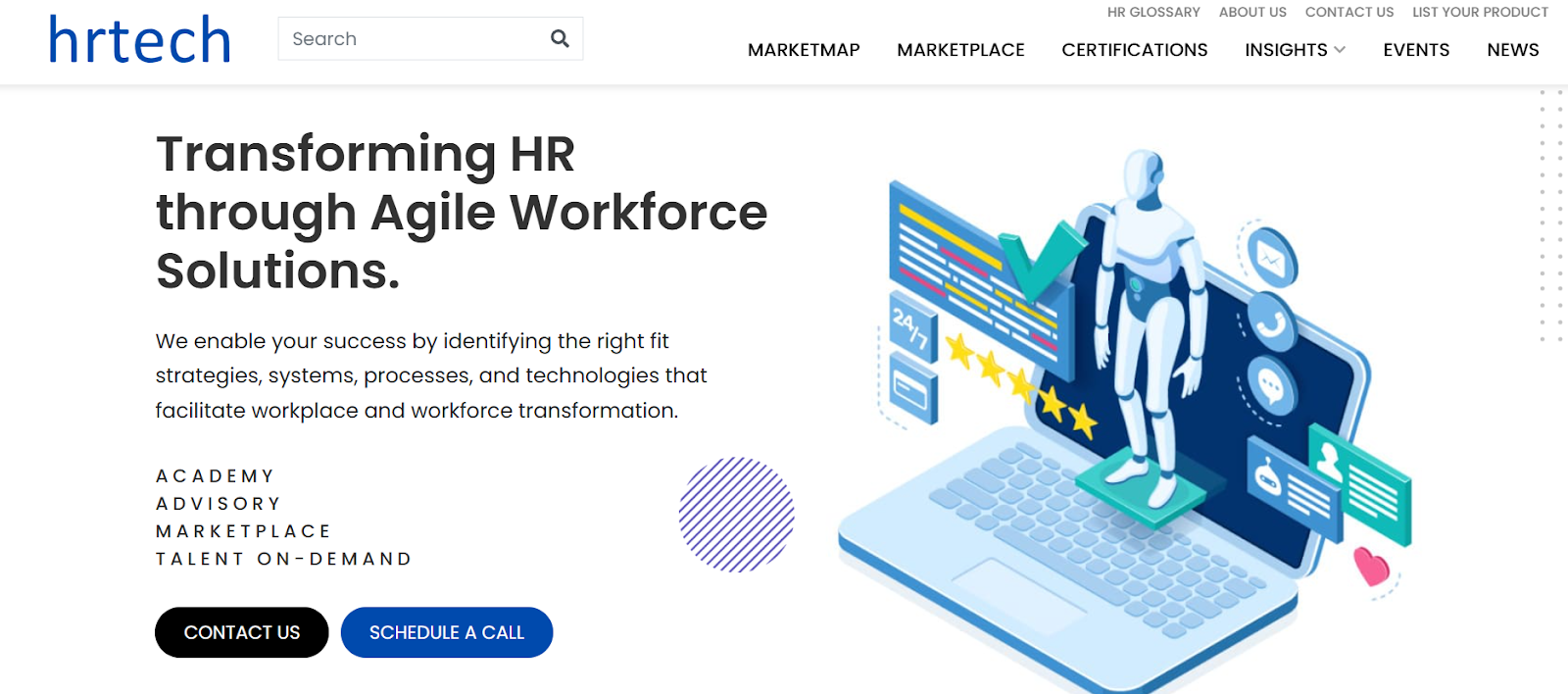
Overview: Hrtech is an advanced HR software solution that leverages AI and machine learning to optimize recruitment, employee engagement, and HR decision-making.
Key Features:
- AI-driven recruitment and resume screening for faster hiring
- Predictive workforce analytics to identify trends and improve retention
- Automated payroll processing with compliance monitoring
- Customizable dashboards and reporting tools for HR insights
Ideal For: Businesses looking to leverage AI in HR for smarter decision-making and automation.
Hrtech‘s marketplace ensures you get scalable solutions coupled with robust support across Asia & the Middle East” can be smoothly introduced.
2. ADP Workforce Now
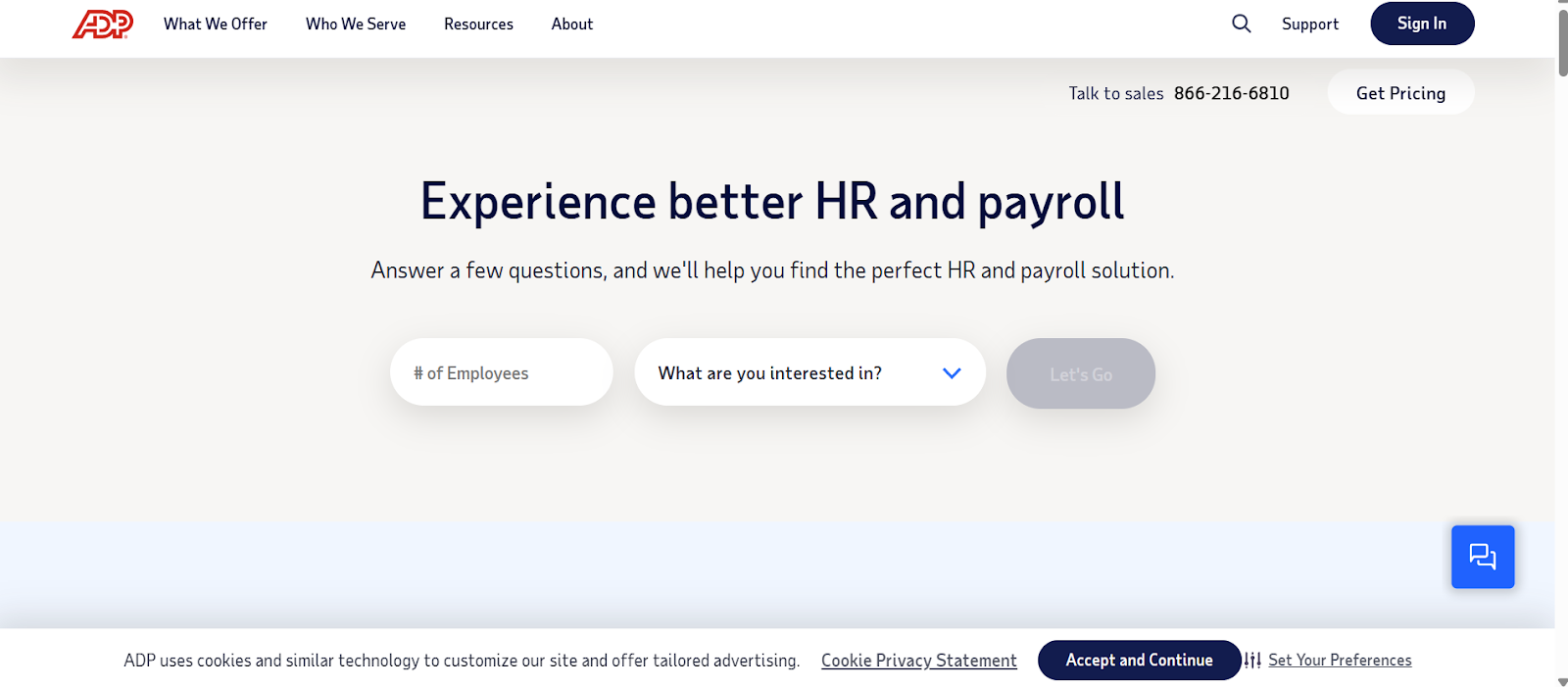
Overview: ADP Workforce Now is an all-in-one HR software designed for large organizations that need comprehensive HR, payroll, and compliance solutions. It offers deep integration with financial, benefits, and workforce management systems.
Key Features:
- Advanced payroll processing with tax and compliance automation
- Employee self-service portals for time tracking, benefits enrollment, and pay stubs
- AI-powered workforce analytics for better decision-making
- Scalable for multinational organizations with multi-currency and multi-language support
Ideal For: Large enterprises with complex HR and payroll needs requiring global scalability.
3. Deel
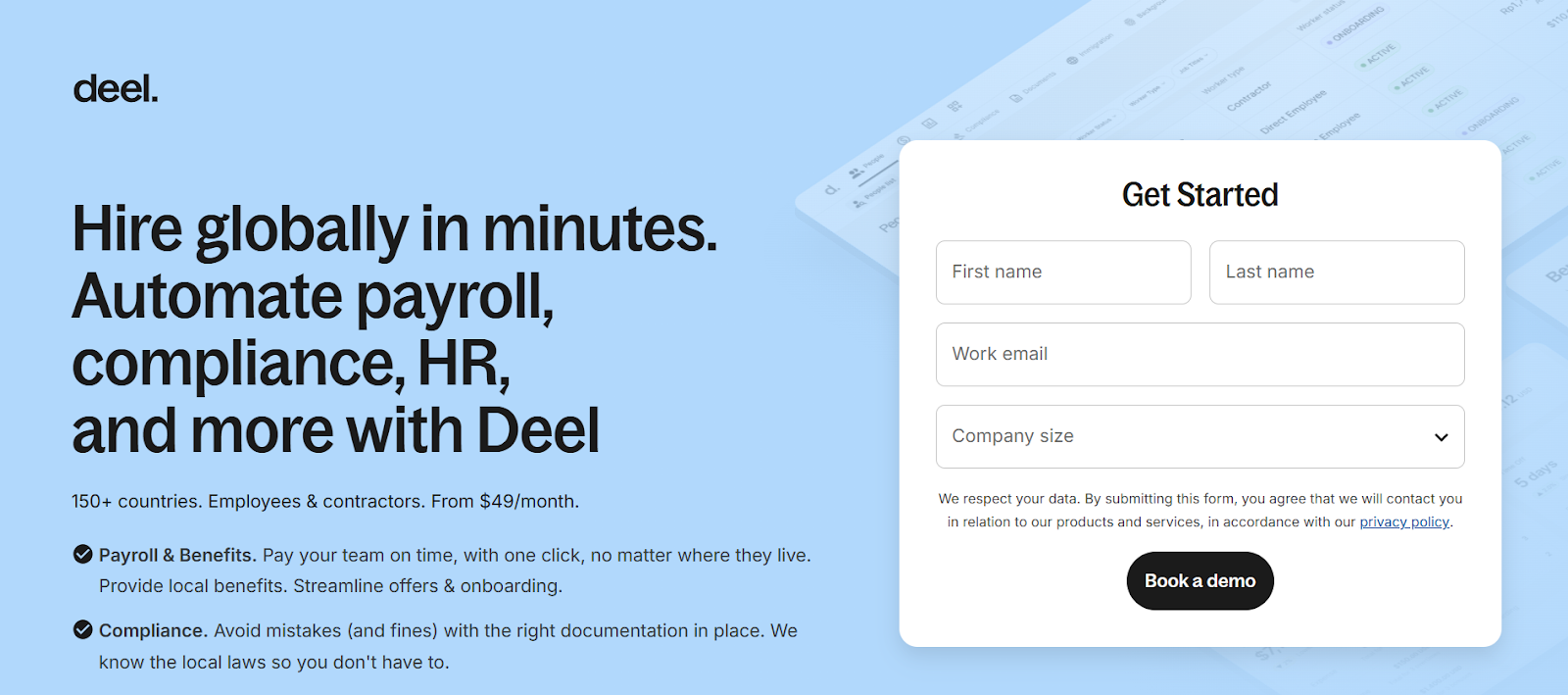
Overview: Deel is designed for businesses with remote employees, contractors, and international hires. It simplifies cross-border payments, compliance, and contracts.
Key Features:
- Automated global payroll with compliance handling for 150+ countries
- Seamless contractor and employee onboarding with localized contracts
- Tax compliance and benefits management tailored to each country
- Integration with accounting and HR tools like QuickBooks, Xero, and BambooHR
Ideal For: Companies hiring internationally or managing remote teams needing seamless payroll and compliance.
4. BambooHR
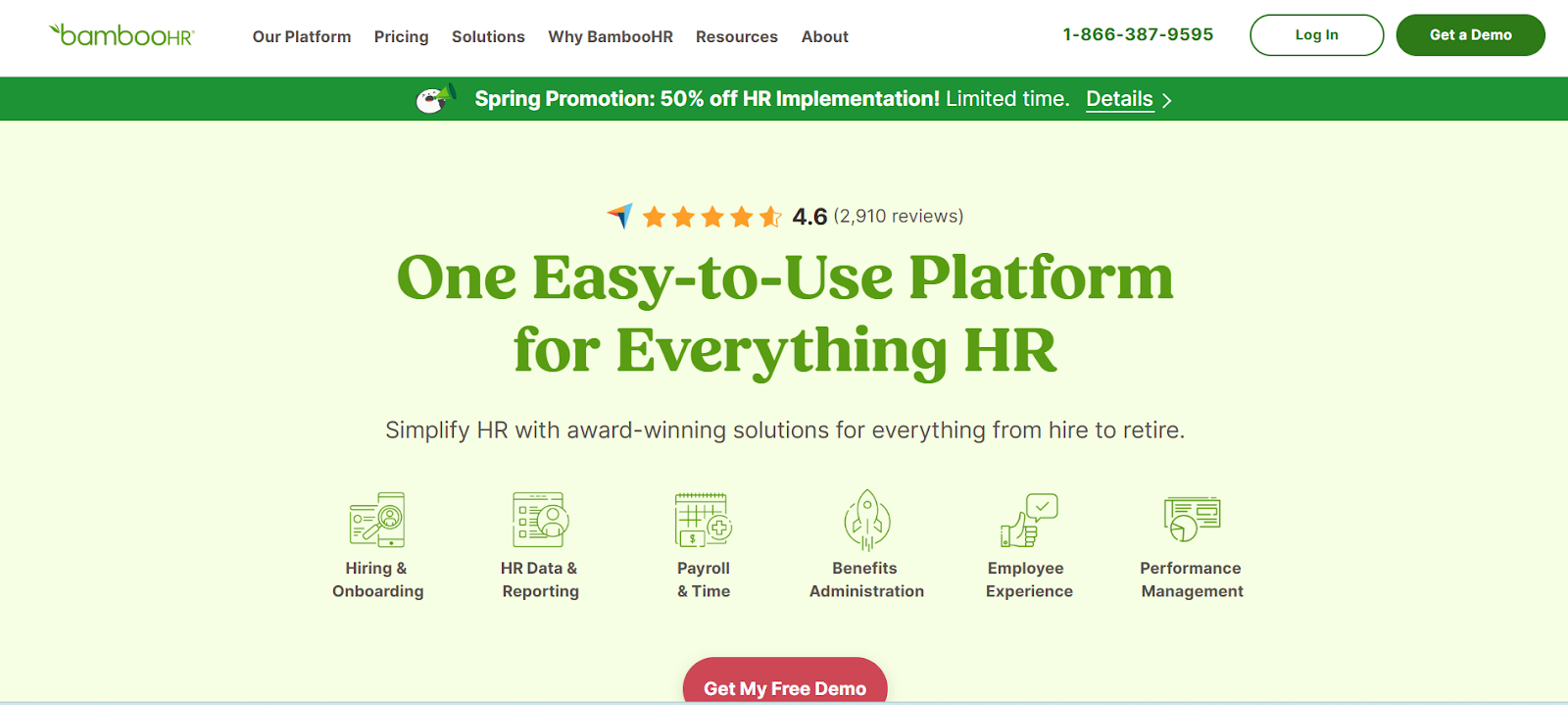
Overview: BambooHR is a user-friendly HR software solution with essential HR functionalities, making it perfect for small and growing businesses.
Key Features:
- Customizable applicant tracking system (ATS) for hiring and onboarding
- Employee records management with easy access to personal and payroll information
- Automated PTO tracking and performance management tools
- Simple reporting and analytics to track workforce trends
Ideal For: Small to mid-sized businesses looking for an easy-to-use HR management solution.
5. Rippling
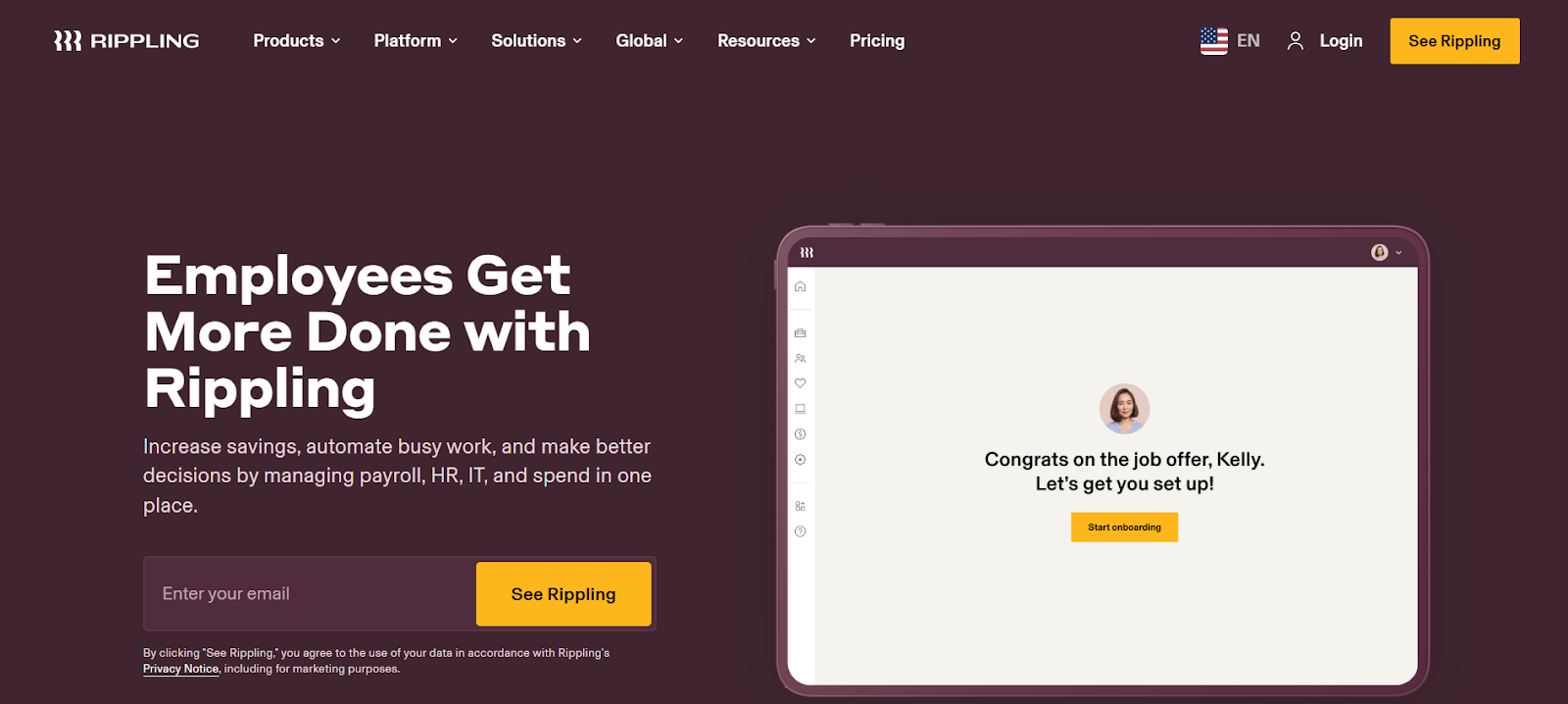
Overview: Rippling is a unique HR platform that combines workforce management with IT automation, offering seamless employee onboarding, payroll, and device management.
Key Features:
- Full HR and payroll automation with compliance tracking
- IT management capabilities, including device provisioning and access control
- Benefits administration, time tracking, and workforce analytics
- Global payroll support for companies hiring across multiple countries
Ideal For: Companies that want a single platform to manage HR, payroll, and IT operations efficiently.
6. SAP SuccessFactors HCM
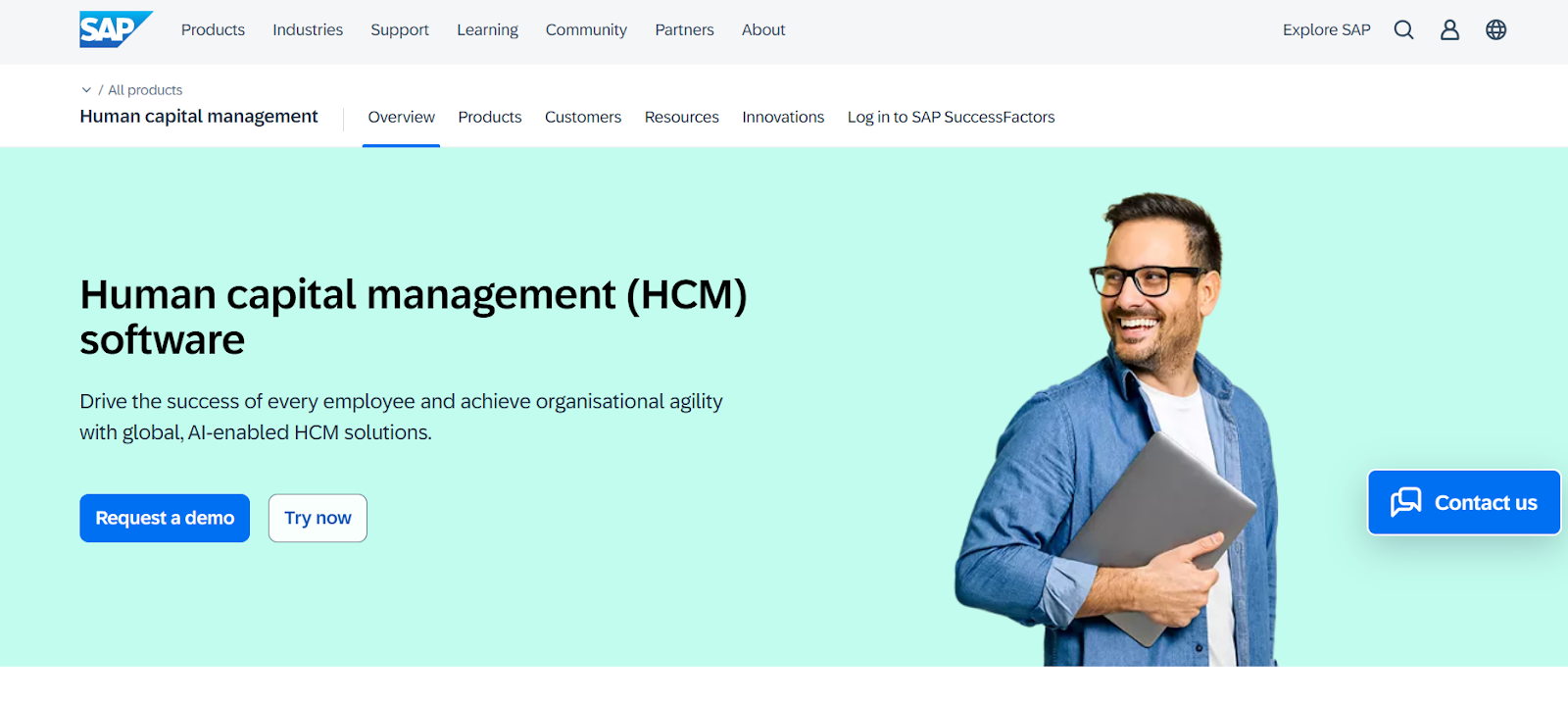
Overview: SAP SuccessFactors is an enterprise-grade HCM platform that offers advanced workforce planning, talent management, and performance tracking solutions.
Key Features:
- AI-driven talent acquisition and succession planning
- Learning and development modules with personalized training programs
- Performance management tools to track employee productivity and engagement
- Integration with financial planning and workforce analytics tools
Ideal For: Large organizations with a focus on workforce planning, leadership development, and data-driven HR decisions.
7. TriNet
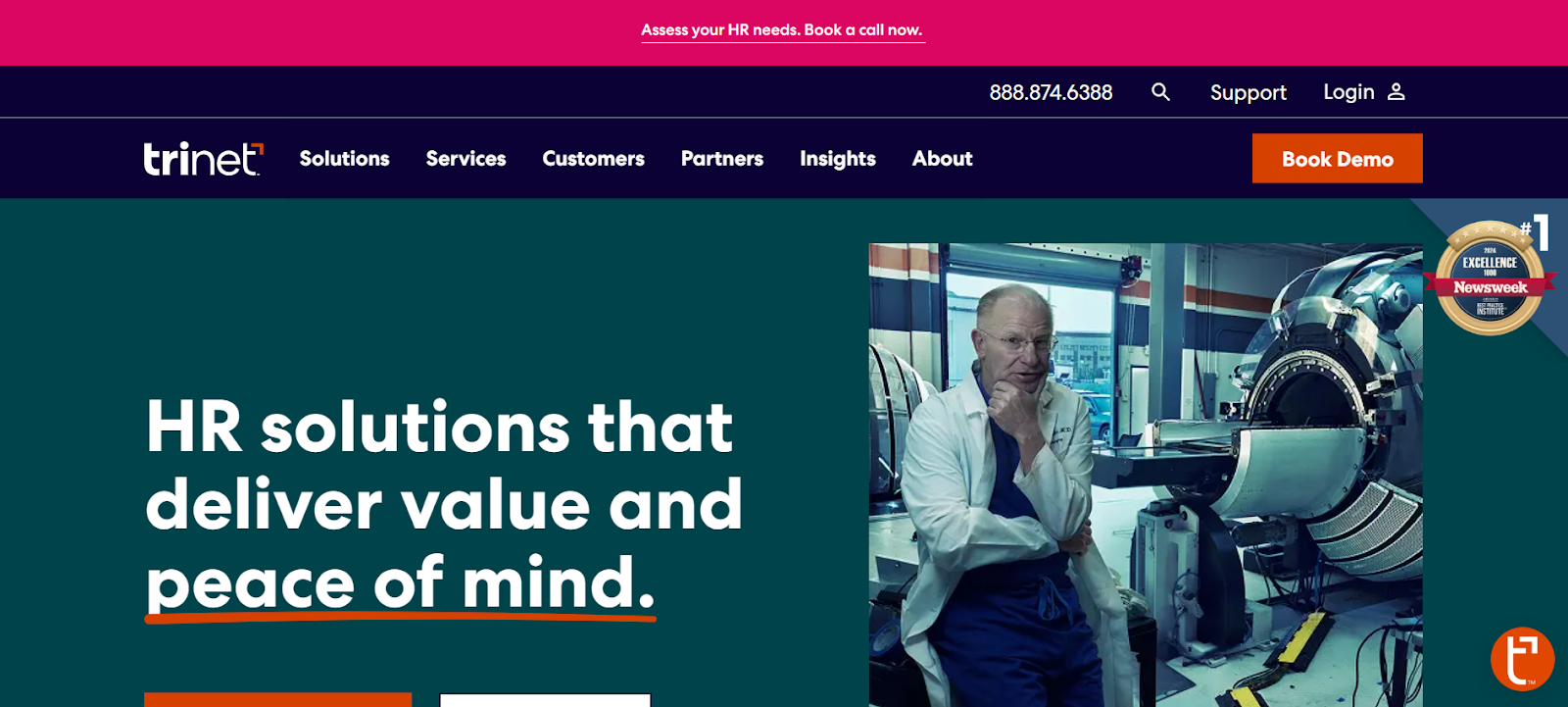
Overview: TriNet is a cloud-based HR platform designed to simplify HR administration for small and mid-sized businesses.
Key Features:
- Comprehensive benefits administration and health insurance management
- Employee self-service for onboarding and updating personal information
- Automated compliance management for federal and state regulations
- Time-off tracking and payroll integration
Ideal For: Small to medium-sized businesses seeking an all-in-one HR management platform.
8. Workday
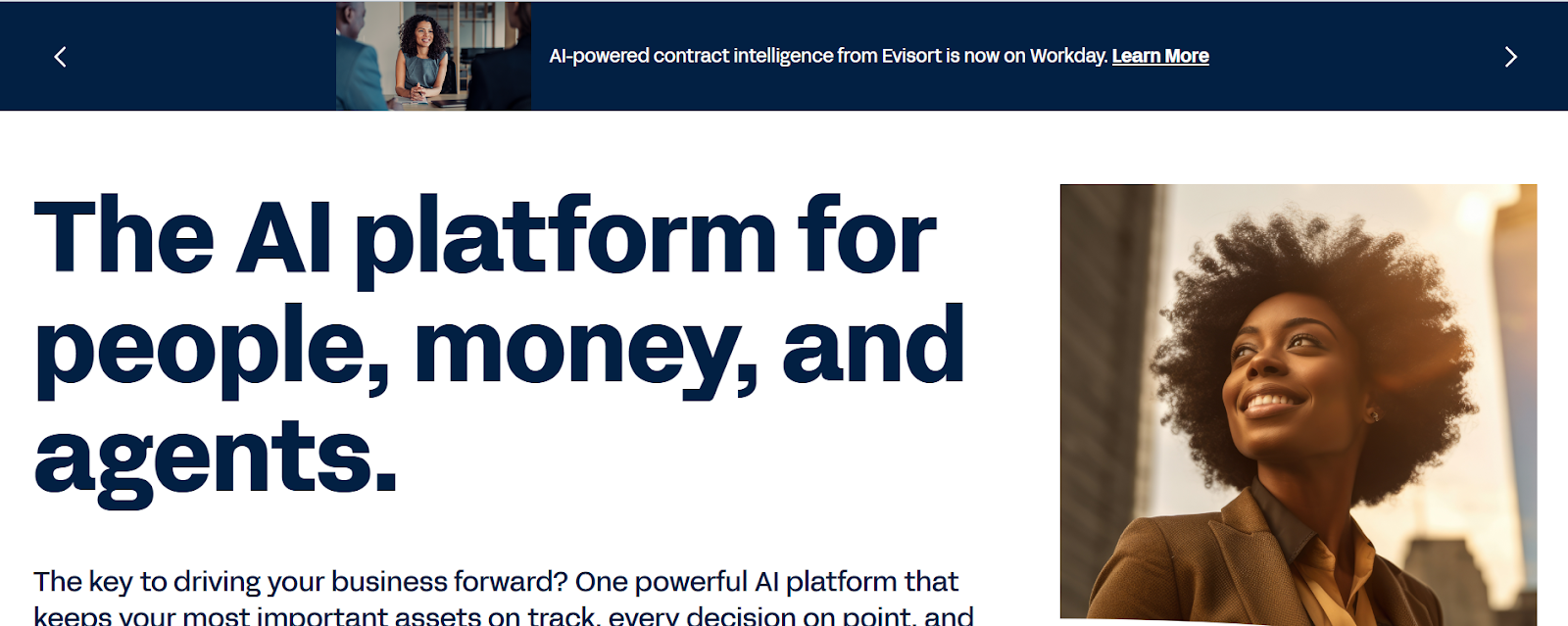
Overview: Workday is an enterprise-level HR and finance solution known for its robust talent management and workforce planning features.
Key Features:
- Advanced analytics for better business insights and decision-making
- Talent management tools, including recruitment, learning, and performance tracking
- Financial management integration for seamless HR and finance operations
- Global compliance and reporting tools
Ideal For: Large enterprises that need a comprehensive, integrated HR and finance system.
9. Ultimate Software (UKG Pro)
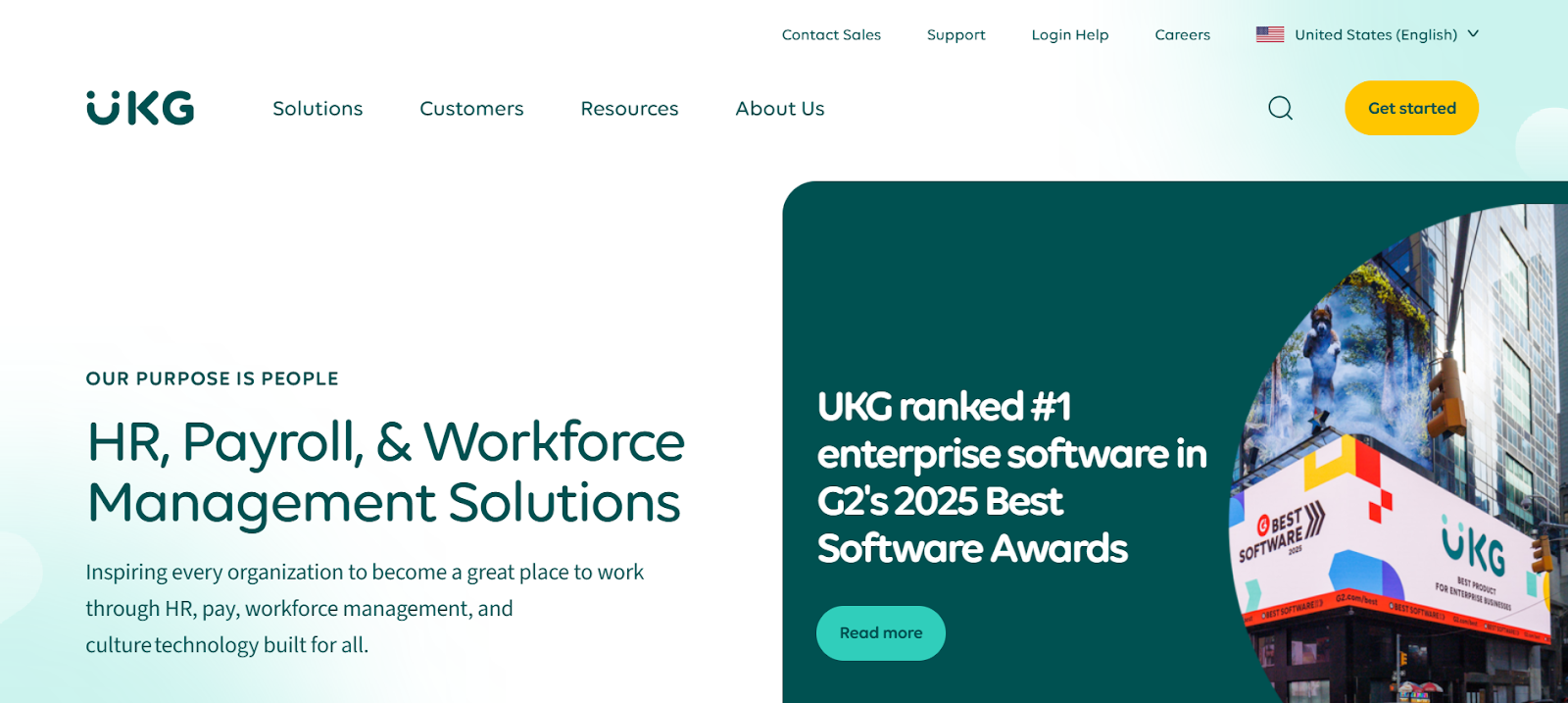
Overview: UKG Pro (formerly Ultimate Software) offers HR, payroll, and talent management solutions with a focus on employee experience and engagement.
Key Features:
- Powerful workforce analytics and reporting tools
- Comprehensive payroll and benefits management
- Employee engagement tools and performance tracking
- Mobile access for employees and managers
Ideal For: Enterprises looking to prioritize employee experience while streamlining HR processes.
10. Ceridian Dayforce
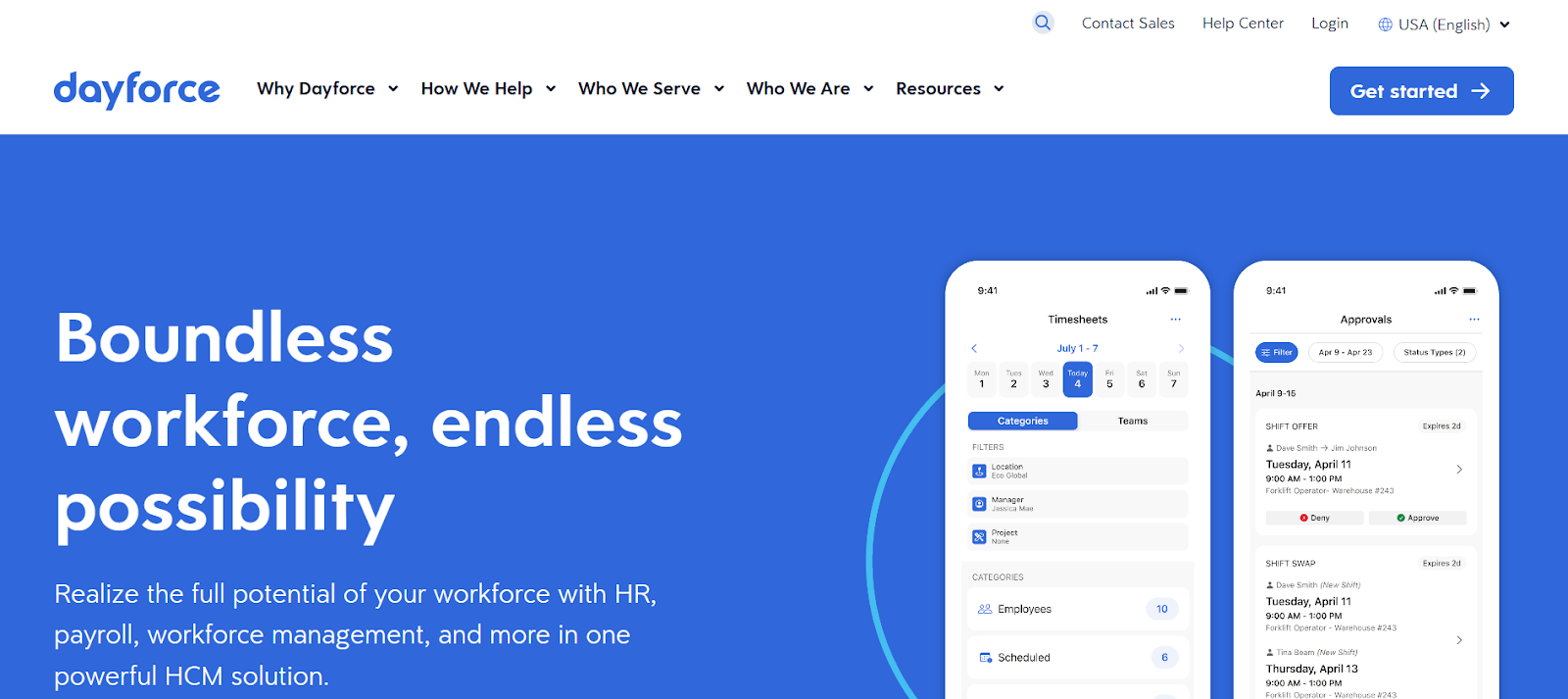
Overview: Ceridian Dayforce is a cloud-based HR software offering payroll, talent management, workforce planning, and more.
Key Features:
- Real-time payroll processing and tax compliance
- Workforce planning and scheduling tools
- Self-service features for employees and managers
- Employee benefits and compensation management
Ideal For: Mid-sized to large companies seeking a fully integrated, real-time HR platform.
How to Choose the Right HR Software for Your Business?
With so many HR software options available, it’s essential to consider:
- Company Size – Startups and small businesses may need a simple solution like BambooHR, while large enterprises may require SAP SuccessFactors.
- Core HR Needs – If payroll and compliance are a priority, Deel and ADP Workforce Now are excellent choices.
- Scalability – Ensure the software grows with your business, especially for remote and global teams.
- Integration Capabilities – Look for software that integrates with existing accounting, payroll, and HR tools.
By selecting the right HR manager software, businesses can improve efficiency, streamline processes, and enhance workforce satisfaction.
Future Trends in HR Management Software
HR management software is evolving rapidly, making it easier for businesses to handle everything from hiring to payroll with greater efficiency. As technology advances, new trends are shaping the way HR teams operate. Here’s what the future holds:
1. Smarter HR with AI and Machine Learning
Artificial Intelligence (AI) is changing HR by automating repetitive tasks and improving decision-making. HR software will soon be able to:
- Automatically scan and shortlist job applicants
- Predict employee resignations before they happen
- Offer personalized learning and career growth plans
- Answer employee questions with AI-powered chatbots
2. Cloud-Based HR Systems for Remote Work
More businesses are switching to cloud-based HR software because it offers:
- Access from anywhere—perfect for remote and hybrid teams
- Automatic updates to stay compliant with labor laws
- Easy integration with payroll, benefits, and attendance tracking
- Lower costs compared to traditional on-premise software
3. HR on Your Phone: Mobile-First Solutions
Employees want to manage HR-related tasks on their phones, so companies are investing in mobile-friendly HR apps that allow:
- Quick access to payslips, schedules, and benefits
- Instant communication with HR teams
- Easy leave requests and approvals on the go
- Digital onboarding and training from anywhere
4. AI Chatbots for Quick HR Support
AI-powered HR chatbots are becoming more common, helping employees get answers without waiting for HR staff. These chatbots can:
- Provide instant responses to leave requests and company policies
- Assist new employees with onboarding steps
- Handle routine HR queries 24/7
- Free up HR teams for more strategic work
5. Unified HR and Payroll Platforms
Instead of using separate tools for payroll, benefits, and performance tracking, companies are moving toward all-in-one HR platforms that:
- Keep everything in one place for easy access
- Reduce errors in payroll and tax calculations
- Improve compliance tracking and reporting
- Provide better workforce insights with real-time data
6. Predictive HR Analytics for Better Decisions
Companies are using data to predict future workforce trends and make better decisions. HR software now helps with:
- Forecasting hiring needs before shortages happen
- Identifying which employees may need additional training
- Tracking employee performance to improve retention
- Optimizing work schedules based on productivity patterns
7. Employee Wellness and Mental Health Support
HR software is becoming more focused on employee well-being with features like:
- Stress management tools and wellness programs
- AI-driven reminders for breaks and work-life balance
- Real-time employee engagement tracking
- Personalized mental health resources and support
With platforms like hrtech, staying ahead of these trends becomes easier, as they provide the latest solutions and updates tailored for the evolving demands of HR teams.
Conclusion
HR manager software is essential for modern businesses, helping streamline HR tasks, improve compliance, and enhance employee experience. By selecting the right software, organizations can reduce administrative burdens, optimize workforce planning, and future-proof HR operations.
Aligning HR technology with business goals ensures long-term success. With AI, automation, and cloud-based solutions driving the future, companies that invest in HR software will stay competitive.
Looking for the best HR solution? Hrtech offers a powerful and scalable HR software platform designed to meet the needs of modern businesses. With advanced automation, AI-powered insights, and seamless integration, hrtech simplifies workforce management and boosts efficiency.

